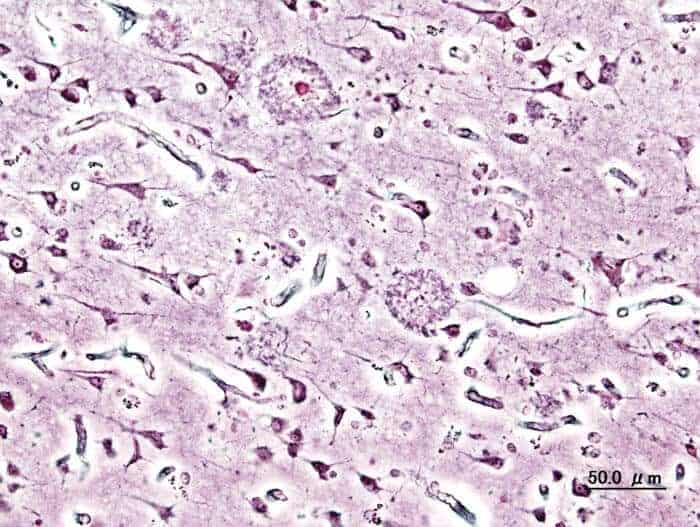An enzyme found in brain cells can break apart the precursors to plaques that accumulate in the organ and cause toxicity in Alzheimer’s disease, according to a new study led by Weill Cornell Medicine scientists.
The study, published Jan. 29 in the Proceedings of the National Academy of Sciences, illuminates where the enzyme, tripeptidyl peptidase 1 (TPP1), cuts these plaque precursors – formed by peptide fragments called amyloid-beta – into pieces. The findings suggest that increasing TPP1 activity may be an innovative target for treating Alzheimer’s disease.
“TPP1 is one of dozens of enzymes in live cells that can degrade proteins,” said senior author Frederick Maxfield, chairman of the Department of Biochemistry and the Vladimir Horowitz and Wanda Toscanini Horowitz Distinguished Professor of Neuroscience at Weill Cornell Medicine. “Our study is the first to find that TPP1 can effectively break down peptides associated with Alzheimer’s disease that are normally very resistant to degradation.”
Strings of amyloid-beta peptides, or fibrillar amyloid-beta, connect to form beta sheets, which are structures that resemble pieces of knitting made of twisted strands. These strands are attached in parallel rows that are tightly connected to each other. Beta sheets accumulate further to create amyloid-beta plaques, which are a hallmark of Alzheimer’s disease, the leading cause of dementia worldwide that affects as many as 5 million Americans.
Interdisciplinary scientists from three institutions collaborated on the research. First, investigators in Maxfield’s lab at Weill Cornell Medicine, led by first author Santiago Solé-Domènech, incubated fibrillar amyloid-beta marked with fluorescent dye together with TPP1 in test tubes and measured when peptides were released from the fibrils.
Next, scientists in the lab of Peter Lobel at Rutgers University performed a test called mass spectrometry that examines individual molecules, and found specific locations where the cleavages took place. They found that TPP1 severed key parts of the peptide chains that are essential for holding the beta sheets together. They proposed that this might cause the fibril to fall apart, similar to unraveling a piece of knitting.
Finally, scientists led by Harold Scheraga, the George W. & Grace L. Todd Professor of Chemistry Emeritus at Cornell University, analyzed how each cleavage affected beta-sheet and fibril stability using computer simulations. They identified that all cuts destabilized the beta-sheet structure and that cleavages at locations after two amino acids in the peptide chain called K16 and F20 had the most destabilizing effects.
“Boosting the ability of enzymes like TPP1 in the future to break down amyloid-beta fibrils before they cause harm is an exciting target for future drug discovery for Alzheimer’s disease,” Maxfield said. “We can also use TPP1 activity as a novel assay to screen the effectiveness of potential drug candidates.”
The study was supported by grants from the National Institutes of Health and the Cure Alzheimer’s Fund.


